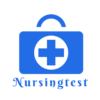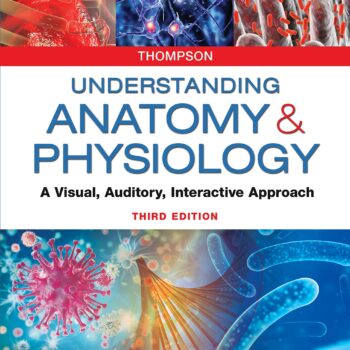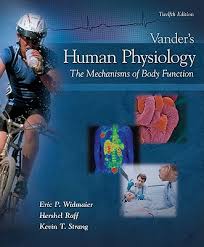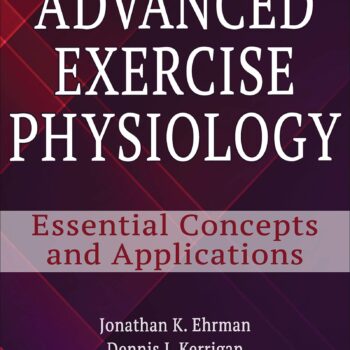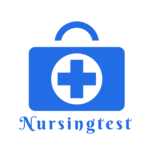
Test Bank For Anatomy & Physiology 8th Edition by Kevin T. Patton, Gary A. Thibodeau
Original price was: $55.00.$22.00Current price is: $22.00.
Digital item No Waiting Time Instant DownloadISBN-13: 978-0323083577 ISBN-10: 0323083579
The Anatomy & Physiology Test Bank for 8th Edition by Kevin T. Patton and Gary A. Thibodeau comes up with a complete question and-answer set for every chapter, which makes it a good resource for students as well as educators. The test bank consists of practice questions of different forms such as multiple-choice, true or false, fill-in-the-blank, or short answer questions. The reason for such an evaluation is to know how well a learner has understood basic areas in anatomy and physiology to help them master essential concepts.
Key Topics Covered
This test bank encompasses a vast range of concepts that are considered important in understanding human anatomy and physiology This includes:
- Cellular structure and function: These are the smallest building blocks of life; their composition and duties in the human body.
- Tissue types: Gives an overview of epithelial tissue, connective tissue, muscle tissue, and nervous tissue.
- Skeletal system: The structure and function of bones, cartilage, and joints.
- Muscular system: Involves muscle types, types of contractions, and the functions of energy in the muscles.
- Nervous system: In-depth coverage of neurons and synapses, while explaining how the central nervous system and the peripheral nervous system work.
- Endocrine system: Components of hormones and how they work in different body systems.
- Cardiovascular system: Structure and course of blood vessels and the function of the heart and its circulatory system.
- Respiratory system: The function of breathing and how gas exchange occurs in the lungs and airways.
- Digestive system: Location and function of the existing organs associated with the process of digestion such as the stomach intestines and pancreas.
- Urinary system: The contribution of kidneys bladder and different organs in excreting waste from the body.
- Reproductive system: Structure and functions of organs of reproduction and their function.
Each Test Bank whether it be for exercise physiology or for any other part of human biology conspicuously emphasizes key word concepts peripherally integrating ATP, enzymes, electrolytes, pH, and the central idea of homeostasis that are important in the grasping of the physiological processes.
Using This Test Bank:
Using this test bank, students can:
- Familiarize themselves with the practice of relevant exam revision questions.
- Strengthen understanding of important body systems like the nervous system and muscular system in addition to learning about how they are linked.
- Be able to make such easy choices that are correct thanks to the answer explanations that settle the reason for why certain choices were made.
- Foster a systematic way of studying with chapter wise questions covering the key textbook on the subject.
How the Test Bank Supports Learning
The Anatomy & Physiology test bank serves as a basic self-evaluation instrument as it leads the learners through challenging areas such as biochemistry and metabolism in a clear manner. For example, questions concerning proteins, lipids, and carbohydrates not only ask for the definitions but also provide situations where learners can apply their knowledge in distinguishing organic and inorganic substances within physiological processes.
This test bank assessment incorporates questions that seek to reinforce the learner’s understanding of biological functions and the genetic material present in cells and gives the learners an integrated perspective of how various systems of the body are related to metabolism and homeostasis.
Practical Applications
For students enrolled in healthcare courses or biological sciences, the level of detail with which the human anatomy operates is very important. This particular test bank supports such comprehensions by:
- Providing concrete examples of what muscle contraction and nerve responses have to do with everyday activities.
- Drawing attention to diseases and anatomical malformations, motivates learners to understand more what can go wrong in the physiological systems.
- Investigating clinical aspects such as pH imbalance, acid-base homeostasis, and electrolyte balance and their potential impact on the body.
Summary
Test Bank for Anatomy & Physiology, 8th Edition, By Kevin T. Patton and Gary A. Thibodeau is a great asset for learners interested in enhancing their skills in the anatomy and physiology subjects. It has a good selection of poses, a thorough topic overview, and good practical uses, this test bank is aimed at promoting participating learning and boosting confidence. Even in the context of doing exams or wanting to understand certain concepts, this test bank has relevant work that aims to promote success in the health and science sector.
Test Bank For Anatomy & Physiology 8th Edition by Kevin T. Patton, Gary A. Thibodeau
Patton: Anatomy and Physiology, 8th Edition Chapter 02-A: The Chemical Basis of Life
Test Bank
TRUE/FALSE
1. Biochemistry involves the chemical makeup of living organisms and the underlying process of life activities.
ANS: T DIF: Memorization REF: Page 34
TOP: Introduction
2. The number of protons in the nucleus of an atom determines its atomic mass.
ANS: F DIF: Memorization REF: Page 36
TOP: Atomic Number and Atomic Mass
3. The positively charged electrons are found in clouds outside the nucleus of an atom.
ANS: F DIF: Memorization REF: Page 36
TOP: Atomic Structure
4. Two shared pairs of electrons represent a single covalent bond.
ANS: F DIF: Application REF: Page 39 TOP: Covalent Bonds
5. The digestion of food is an example of a decomposition reaction.
ANS:TDIF:ApplicationREF: Page 41
TOP: Chemical Reactions
6. The number and arrangement of electrons orbiting in an atom’s outer shell determine its chemical activity.
ANS: T DIF: Application REF: Page 37 TOP: Energy Levels
7. An atom is chemically inert if its outermost shell has two pairs of electrons.
ANS: F DIF: Application REF: Page 37 TOP: Energy Levels
8. An isotope of an element contains the same number of neutrons but different numbers of protons.
ANS: F DIF: Memorization REF: Page 37
TOP: Isotopes
9. Electrovalent and ionic bonds are the same.
ANS: T DIF: Memorization REF: Page 38
TOP: Ionic Bonds
10. Radiation results from the breaking apart of the nucleus of an atom.
ANS: T DIF: Memorization REF: Page 38
TOP: Radioactivity
11. Radioactivity can cause an atom of one element to change to that of another element.
ANS: T DIF: Memorization REF: Page 38
TOP: Radioactivity
12. Gamma radiation has less mass than alpha or beta radiation.
ANS: T DIF: Application REF: Page 38 TOP: Radioactivity
13. A substance that resists changes in pH when acids or bases are added is called a buffer.
ANS: T DIF: Application REF: Page 45 TOP: Buffers
14. The chemical reaction of an acid with a base will produce salt and water.
ANS: T DIF: Application REF: Page 45 TOP: Salts
15. Water acts as a very effective solvent.
ANS: T DIF: Memorization REF: Page 43
TOP: Water
